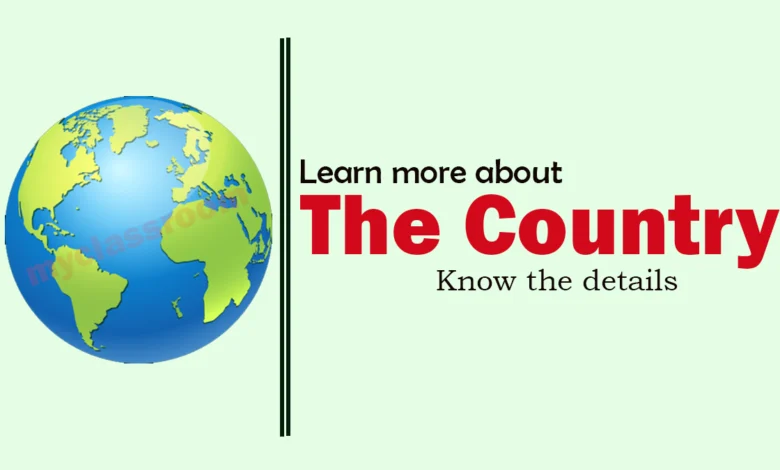Capital of Canada: A Detailed Guide to Ottawa

Canada, the second-largest country in the world, is known for its breathtaking landscapes, multicultural cities, and rich history. At the heart of this vast nation lies its capital city, Ottawa. While many assume Toronto or Vancouver holds this title, Ottawa is the political and cultural center of Canada. This blog delves into the history, significance, and attractions of Ottawa, offering a comprehensive guide to Canada’s capital.
Why is Ottawa the Capital of Canada?
Ottawa was chosen as Canada’s capital in 1857 by Queen Victoria. Its selection was strategic: located on the border of Ontario and Quebec, it balanced the interests of English-speaking and French-speaking Canadians. Additionally, its inland location made it less vulnerable to American attacks compared to border cities like Toronto or Montreal.
Geography and Climate
Ottawa is situated in southeastern Ontario, along the banks of the Ottawa River. The city is part of the National Capital Region (NCR), which includes Gatineau, Quebec, on the opposite side of the river. Ottawa’s geography is characterized by rolling hills, lush green spaces, and the iconic Rideau Canal.
The city experiences a humid continental climate, with four distinct seasons:
- Winter: Cold and snowy, perfect for winter sports and festivals like Winterlude.
- Spring: Mild and blooming, with the famous Canadian Tulip Festival.
- Summer: Warm and sunny, ideal for outdoor activities.
- Fall: Crisp and colorful, with stunning autumn foliage.
Historical Significance
Ottawa’s history dates back thousands of years, with Indigenous peoples, including the Algonquin Anishinaabe, being the original inhabitants. The city’s name, “Ottawa,” is derived from the Algonquin word adawe, meaning “to trade.”
European settlement began in the early 19th century, and Ottawa grew rapidly due to its strategic location for trade and transportation. The construction of the Rideau Canal (a UNESCO World Heritage Site) in the 1830s further boosted its importance.
Ottawa as the Political Hub
As Canada’s capital, Ottawa is home to the country’s federal government institutions. Key landmarks include:
- Parliament Hill: The iconic center of Canadian politics, featuring the Peace Tower, the Library of Parliament, and stunning Gothic Revival architecture. Visitors can watch the Changing of the Guard ceremony in summer or enjoy the Sound and Light Show at night.
- Supreme Court of Canada: The highest court in the country, open to the public for tours.
- Rideau Hall: The official residence of Canada’s Governor General, set amidst beautiful gardens.
Cultural and Artistic Scene
Ottawa is a vibrant cultural hub, offering a mix of history, art, and entertainment:
- National Gallery of Canada: Home to an extensive collection of Canadian and international art, including works by the Group of Seven.
- Canadian Museum of History: Located across the river in Gatineau, it showcases Canada’s Indigenous heritage and history.
- ByWard Market: A lively district with shops, restaurants, and street performers, perfect for experiencing Ottawa’s local culture.
Natural Beauty and Outdoor Activities
Ottawa is a city that embraces nature. Key attractions include:
- Rideau Canal: A UNESCO World Heritage Site, it transforms into the world’s largest skating rink in winter.
- Gatineau Park: Just a short drive from downtown, it offers hiking, biking, and stunning views of the Ottawa Valley.
- Major’s Hill Park: A scenic spot with views of Parliament Hill and the Ottawa River.
Festivals and Events
Ottawa hosts numerous festivals year-round, reflecting its cultural diversity and national pride:
- Canada Day (July 1): The city comes alive with celebrations, fireworks, and concerts.
- Winterlude (February): A winter festival featuring ice sculptures, skating, and family-friendly activities.
- Canadian Tulip Festival (May): A colorful celebration of spring and Canada’s historic ties with the Netherlands.
Economy and Education
Ottawa’s economy is driven by the public sector, with many residents employed by the federal government. The city is also a growing hub for technology and innovation, earning it the nickname “Silicon Valley North.” Companies like Shopify, a global e-commerce giant, are headquartered here.
The city is home to several prestigious institutions, including:
- University of Ottawa: A bilingual university known for its research and law programs.
- Carleton University: Renowned for its journalism and engineering programs.
Why Visit Ottawa?
Ottawa is more than just Canada’s political capital; it’s a city that offers something for everyone. Whether you’re exploring its historic landmarks, enjoying its natural beauty, or immersing yourself in its vibrant culture, Ottawa is a destination that leaves a lasting impression.
FAQs About Ottawa
1. Is Ottawa the largest city in Canada?
No, Ottawa is not the largest city in Canada. It is the fourth-largest city, following Toronto, Montreal, and Vancouver.
2. What languages are spoken in Ottawa?
Ottawa is a bilingual city, with both English and French widely spoken. About 40% of the population is bilingual.
3. What is the best time to visit Ottawa?
The best time to visit Ottawa depends on your interests. Summer is ideal for festivals and outdoor activities, while winter is perfect for experiencing the Rideau Canal Skateway and Winterlude.
4. How do I get around Ottawa?
Ottawa has an efficient public transportation system, including buses and the O-Train light rail. Biking and walking are also popular, especially along the scenic pathways.
Conclusion
Ottawa, the capital of Canada, is a city that beautifully blends history, culture, and nature. From its iconic Parliament Hill to its vibrant festivals and stunning landscapes, Ottawa offers a unique and enriching experience for visitors and residents alike. Whether you’re a history buff, nature lover, or culture enthusiast, Ottawa is a destination that should be on your travel list. Explore Canada’s capital and discover why it truly is the heart of the nation.

